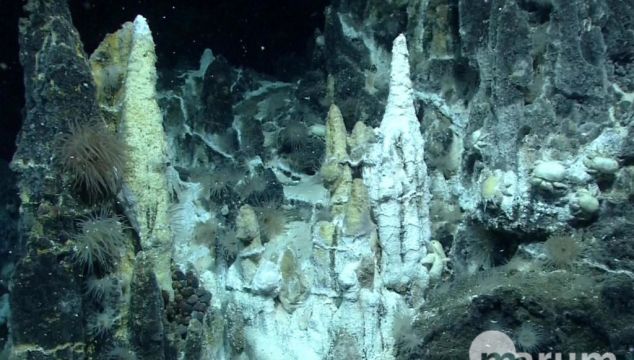Almost two-thirds of deep sea species are at risk of extinction, new research has found.
The study from Queen’s University Belfast academics has led to 184 deep-sea species being added to the global Red List of Threatened Species.
The International Union for Conservation of Nature (IUCN)’s red list includes universally-recognised extinction risk categories used to raise awareness of species’ conservation needs to industry, policymakers, and the public.
More than 140,000 species have been red listed but less than 15 per cent are from marine environments and barely any are from the deep sea, with the remoteness of those habitats meaning they are often understudied.

Lead researcher and Queen’s University Belfast PhD student, Elin Thomas, said the new study focused on assessing species found at hydrothermal vents.
Those deep-sea ecosystems are described as hosting a similar density of life as tropical rainforests and coral reefs. There are approximately 600 of these hotspots known worldwide and most are one-third of a football field in size.
“These areas are increasingly targeted for their natural resources, and we wanted to better understand the threat this poses to the rich marine life found there,” she said.
“As one of the dominant species groups at vent habitats and following on from the assessment of the Scaly-foot Snail as Endangered in 2019, we focused our study on molluscs.”
The researchers applied the IUCN Red List criteria to assess the extinction risk of all mollusc species known exclusively from hydrothermal vents.
The research found that of the 184 species assessed, 62% are listed as threatened: 39 are critically endangered, 32 are endangered, and 43 are vulnerable.
The paper A Global Red List for Hydrothermal Vent Molluscs was published in Frontiers in Marine Science, and supported by the Marine Institute. The research involved an international team from the USA, Canada, Japan and the UK.
Ms Thomas added: “Almost two-thirds of the molluscs are listed as threatened, which illustrates the urgent need to protect these species from extinction.
“Indian Ocean vent molluscs are under the greatest extinction risk, with 100 per cent of species listed in threatened categories and 60 per cent as critically endangered.
“This coincides with the distribution of mining contracts granted by the International Seabed Authority, highlighting the risk that mining poses to vent species and clearly demonstrating why we need these data.
“In fact, we found that seabed management and mining regulation consistently had the greatest impact on a species’ extinction risk, so we need regulations in place as a matter of urgency.
“This research should be used to develop new policies to protect these species before it is too late.”
She added: “It’s vital that we continue to deepen our understanding of the marine environment before it’s too late for too many species.”







